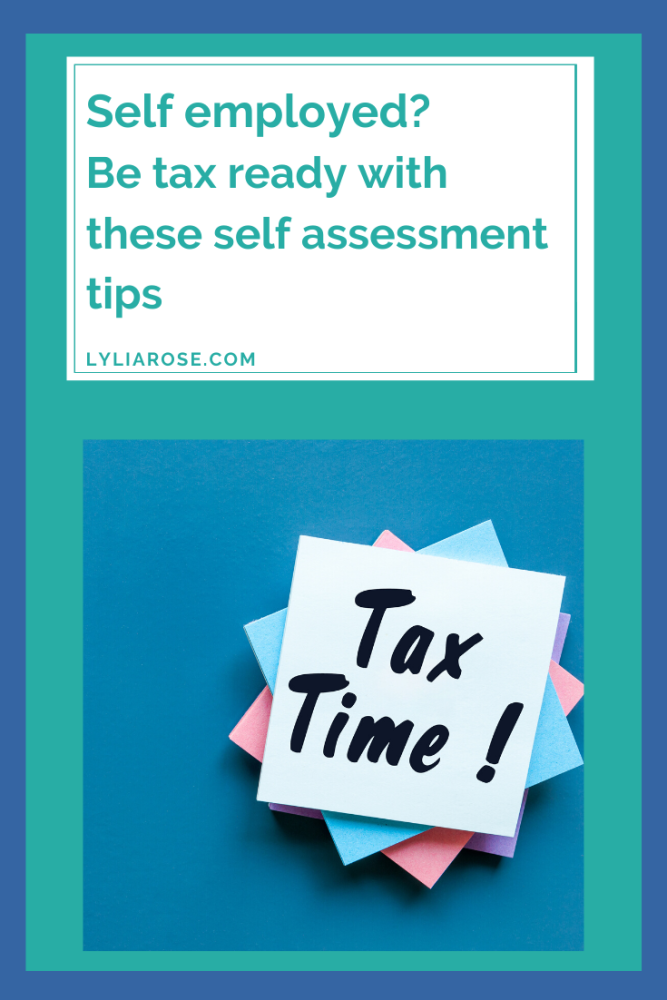Be tax ready for your self assessment with these tips for the self employed
Posted on
We may only be a few weeks into January, and while there seems to be surprising news popping up every day, there is a big surprise for those of us running small and independent businesses that shouldn’t be overlooked: the self-assessment tax return deadline.
Yes, the deadline for those of us who need to complete a self-assessment bill is looming. It needs to be done by January 31st. And with all the headaches that can come with it, before you go scrambling around the home office trying to find receipts, you’ll want to know how to carry out an assessment without any hitches or hiccups that could be costly.
In this short post, we’ll look at ways to get your assessment done correctly, as well as ways to get it done without breaking a sweat. It all starts with keeping tabs on yourself.

Helpful self assessment organisation and preparation tips
Be “appy” with your tax returns
Sure, keeping records with pen and paper and using a calculator to tot it up will suffice, but it’s a time drain, there’s more scope for human error and there are much better digital methods to keep records of your accounts nowadays. Anyone running a personal business should be aware of using apps that keep records of your expenses and earnings, rather than having to jot it down.
Some of the best recommended self-assessment apps include:
- QuickBooks (you’ll see a lot of their ads on TV just now)
- Xero
- Anna
Of course, every business is different, so have a browse of the different apps out there to see which suits you best.
If you really can’t get along with the apps, then learn some Excel spreadsheet skills. By inserting the correct formulas, your spreadsheet can work out all the calculations for you every time you enter an incoming or outgoing.
Don’t do your tax returns
Surely not doing your returns is illegal. Yes, it is, but this isn’t advice to skip on your taxes. Take all the hassle off by hiring someone who knows business tax and accountancy like the back of their hand.
Hiring a professional accountant can help see your taxes get lowered as they’ll know what qualifies as a taxable expense while keeping everything correct to the penny.
Even if you hire someone to do all your tax returns, it's still a good idea to know what you'll owe so it's not a surprise. If you're in the US you can calculate your tax returns here and in the UK this self-employed calculator is handy.
Know what ISN’T to be taxed
If you can’t afford to have someone else do your accounts on your behalf, then it’s good to know what you can claim as a business expense. These include things like office costs, business travel costs, advertising, website costs and subcontractor costs.
For anyone working from home, you should also know the government allows you to cover utility bills to a certain percentage Again, it can be a bit murky, so it’s always best to ring someone who knows or even get in touch with HMRC.
A simpler way is to use HMRC’s Simplified Expenses base rates. These let you claim a set rate dependent on the number of hours you work from home, instead of trying to work out what percentage of electricity is business use and so on.
Know when you don’t need to pay tax
If you’re running a small business as a hobby and you’ve made less than £1000 in the last year, you don’t need to file taxes. The same applies if you’re running a non-profit like a local charity as a business.
Double-check all the criteria HMRC work against to see if you have to self-assess. They have a handy tool on their website here to make it easy to find out if you should be paying tax on your side gig or small business.
Don’t forget you’ll be asked to cough up the money
Submitting your assessment isn’t the end of the possible stress for you. You have to then pay the tax bill...!
Make sure you are prepared for the payments by saving money towards your future tax bill every month. There are lots of handy tax calculators for the self-employed online where you can enter your predicted income for the year, or even your actual monthly income, and you’ll see just how much tax you might owe. You can then make a plan to save a set amount towards your tax bill every month.
Don’t forget about National Insurance contributions and student loan deductions too.
If you owe more than £1000 in tax then self-assessment returns work on a “payments on account” system. This means as well as paying this year’s bill, you’ll also be billed for next year’s predicted tax bill, divided between two payments on 31st January and 31st July.
These payments on account will go towards your next tax bill and are based on your tax bill for the year before, so expect this amount, but split between two payments.
If these payments on account do not cover the full bill for next year then you’ll make a balancing payment that’s due by the following January 31st. If you overpay via the payments on account then you’ll be refunded by HMRC.
Payments on account are a good thing really as you’ll always be one step ahead of your tax bill payment.
Running a business from home and looking for advice and how to do it effortlessly?
Read more blog posts on running your own business with advice on how to market yourself and get your business seen in a crowded online marketplace.
Please note – I am not an expert and you always should seek your own legal tax advice.
Related self-employed blog posts
Running a home based business tips
How to deal with unpaid invoices when self-employed
How to be tax ready when self employed
Top bookkeeping tips for money-making mums
3 important things to consider when starting a self-employed business
The Ultimate Marketing Strategy to Give Your Business a Boost
6 ways being online can improve your small business
7 tips for a successful small business
Related work from home blog posts
How to manage your time effectively when working from home
The pros and cons of working from home
Why working from home is better than working in an office
Work-life balance tips for work at home mums & dads
5 ways to create the best working environment from home
How to survive the half term when you work from home



